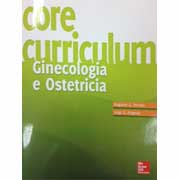282- Cytoreductive surgery in primary advanced epithelial ovarian cancer
280- Cytoreductive surgery in primary advanced epithelial
ovarian cancer
Luca Ansaloni, Federico Coccolini, Fausto Catena, Luigi Frigerio, Robert E Bristow
World J Obstet Gynecol 2013 May 10; 2(2): -00
Abstract: Epithelial ovarian cancer is one of the most common malignancy and one of the principal causes of death among gynaecological neoplasm. The majority of patients (about70%) present with an advanced International Federation of Gynaecology and Obstetrics stage disease. The current standard treatment for these patients consists of complete cytoreduction and combined systemic
chemotherapy (CT). An increasing proportion of patients undergoing complete cytoreduction to no gross residual disease (RD) is associated with progressively longer overall survival. As a counterpart, some authors hypothesized the improving in survival could be due more to a less diffused initial disease than to an increase in surgical cytoreduction rate. Moreover the biology of the tumor plays an important role in survival benefit of surgery. It’s still undefined how the intrinsic features of the tumor make intra-abdominal implants easier to remove. Core tip: The present paper reviews the efficacy of complete cytoreductive surgery in the treatment of primary advanced epithelial ovarian cancer. Outlining the importance for standard criteria in defining the completeness of cytoreduction. Moreover the biology of the tumor plays an important role in survival benefit of surgery. It’s still undefined how the intrinsic features of the tumor make intra-abdominal implants easier to remove. Adjuvant and hyperthermic intraperitoneal chemotherapy could play a decisive role in the coming years as the completeness of macroscopic disease removal increases with advances in surgical techniques and technology.
